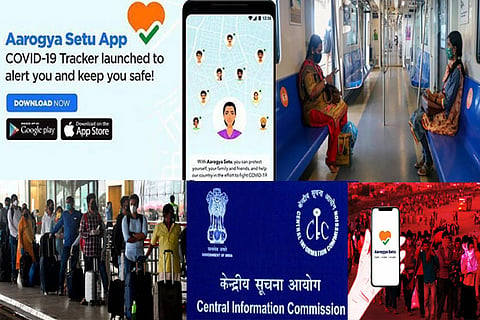

Chennai
The idea was to help the government machinery, as well the public utilities such as healthcare centres, and individuals arm themselves with a handheld tool to aid in the process of tracking and isolating in case one contracted the infection. Half a year into the coronavirus crisis, as many as 16 crore citizens, who downloaded the app, are wondering about the effectiveness of the government’s hasty roll-out of the application, which was being pitched as one of the tentpoles of India’s battle against the dreaded virus.
The ground reality right now paints a far from encouraging picture when it comes to the use of the app daily. For instance, one of the common points of the human congregation, where such an app would have served a purpose was public transportation services. From bus stops to airports to railway stations, or even public and private offices, the app by its Bluetooth connectivity could be used to warn users if they have been in touch with someone who had contracted the infection. Unfortunately, barely a handful of institutions implemented the app to check the health status of its users when they entered any given public space. Airports in India had given up on the app, considering the cumbersome process of check-in which would be extended if the individual health status of each traveller had to be assessed. The airports eventually resorted to an electronic or handwritten self-declaration of sorts that passengers ended up submitting while booking their tickets itself.
The app per se, which was developed by some of the sharpest minds in the Indian info-tech space, had run into trouble early on when users suspected that it would eventually end up becoming a tool of surveillance for the government and outgrow its mission of pure contract tracing. The Centre had, of course, clarified this when it released the Aarogya Setu Data Access and Knowledge Sharing Protocol – which said the app was only collecting data about contact, location and self-assessment from users and that it would be deleted after 180 days.
The object of such a huge data mining exercise is called into question when one considers the fact that roughly 10 per cent of the population had downloaded the app, and that 90 pc of the population were left out of this exercise. Experts had stated early on that the efficacy of this app could be proven only if at least 50 pc of the population had downloaded the app, and the process of contact tracing could only succeed if the online process was strongly supplemented by an on-ground team that could close the loop on the tracing. Last month, the app ran into yet another roadblock after reports emerged that the ministries attached to the creation of the app denied any knowledge of who created the app. The Central Information Commission had served the Centre a show-cause notice for supposedly offering evasive answers when confronted with the question of the origin of the app. The Centre later clarified that the app was created transparently with public-private collaboration.
The government’s intention behind rolling out the app was certainly noble. However, the project seems to be marked by an absence of a thorough understanding of who exactly the app was aimed at, the penetration of the basic technology layer upon which the app would be built, and more than anything, the willingness of the populace in embracing a digitally-led programme in the middle of one of the biggest healthcare emergencies in recent memory. The government could be forgiven for jumping on to the e-tracing bandwagon like many developed nations. But unlike those countries, India doesn’t have a safety net that permits repeated trips back to the drawing board.
Visit news.dtnext.in to explore our interactive epaper!
Download the DT Next app for more exciting features!
Click here for iOS
Click here for Android